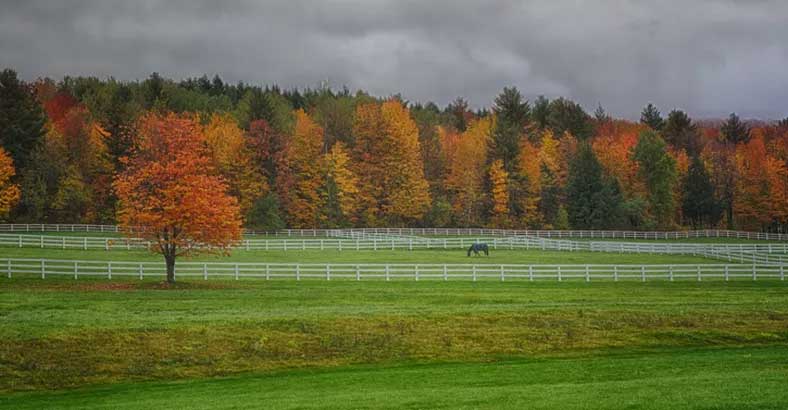
25 Sep 2015 Fall is coming….
Cooler temperatures are likely going to be welcomed by most of us, including our four legged equine friends. But with that come a couple of considerations to be made in order to transition safely into the new season.
You have all heard it before: “Be cautious during spring when allowing horses access to lush green grass”. However, it is important to remember that the tired-looking grass in autumn can be just as dangerous for those horses prone to laminitis.
This is how it works:
The very factor that makes grass so appealing and tasty to horses is its sugar content. Grasses contain sugars that are easily digested by horses in the foregut, such as fructose and glucose. However, there is also fructan (chains of fructose), which is not easily broken down in the foregut. Fructan then passes to the hindgut where it disturbs the pH level, causing the loss of digesting bacteria and changes in the acid levels. That in its turn causes an inflammatory response, which can lead to colic or laminitis in certain horses.
Fructan levels in pasture grass varies by type of grass, season, location, time of day, pasture management, population on the pasture, mowing length and even the part of the plant that is being grazed (stem versus leaves).
- Fructan levels are usually highest in the late afternoon and evening and lower in the very early morning hours. Because the sugars are produced by photosynthesis, the levels rise during the day and are used at night to continue the growth.
- However, when the temperatures at night are too low, the sugars stay in the leaves and can be grazed by the horses. The cold temperatures are causing the growth to cease or slow down and the sugar cannot be utilized as fast as it has been produced.
- The lower parts of the grasses, the stems, are also usually the richest in fructans. Overgrazed pastures or pastures mowed too short are examples of that situation.
- Stressed plants due to for example drought and poor soil conditions will produce more Fructan than happy plants.
- During periods of fast forage growth, Fructan concentrations are higher, such as in spring or after heavy rain following a heat wave.
Numerous benefits are to be had for horses on turnout.
Turned-out horses are happy horses; they are usually more fit due to increased exercise; show less anxiety and fewer stereotypes. Their respiratory and musculoskeletal systems are usually stronger and they have potentially fewer gastric ulcers due to the consistent feeding pattern. Not all horses are prone to laminitis, especially if their body condition is kept in check and they are in regular work. There are also grazing muzzles to moderate the amount the horse will consume while on the grass.